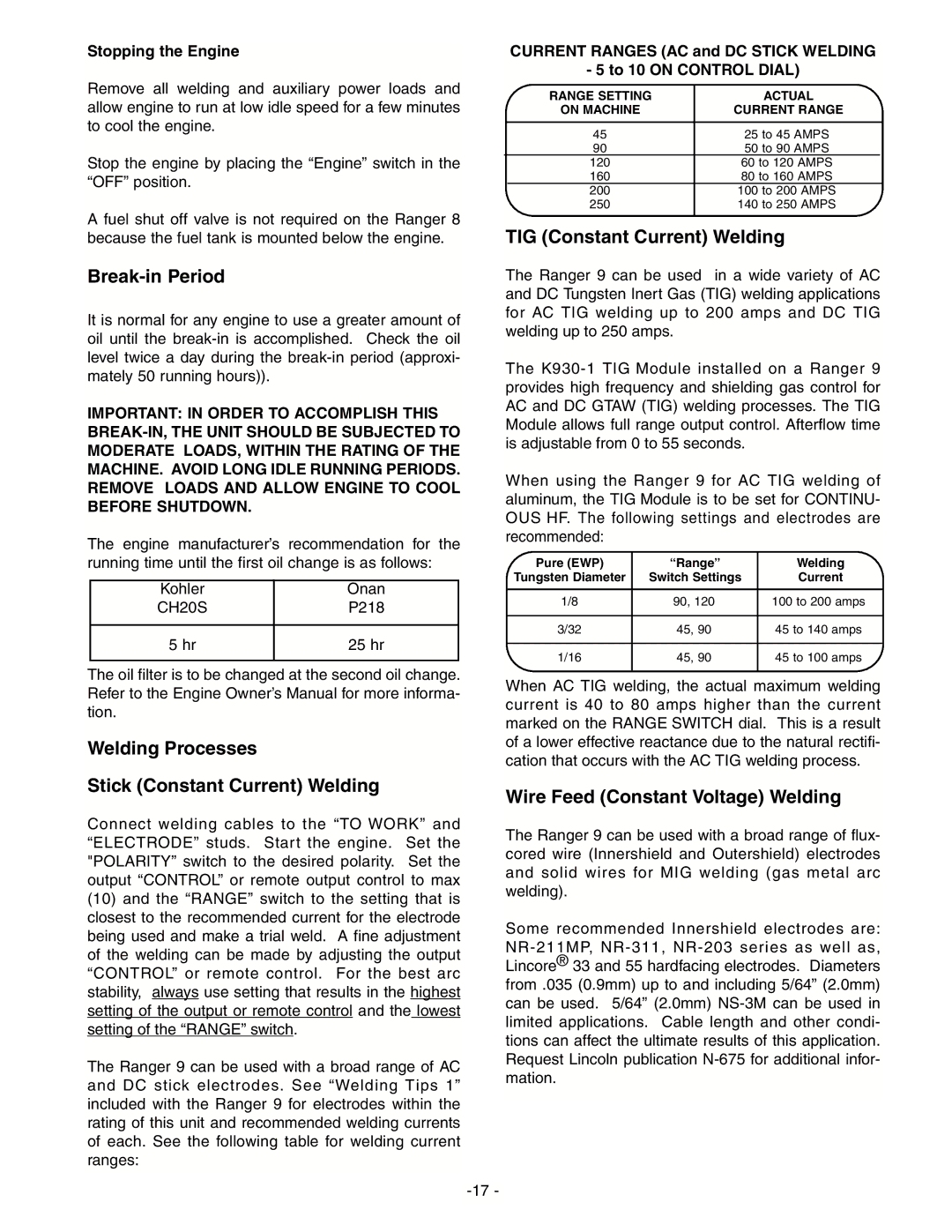IM511-D specifications
Lincoln Electric IM511-D is an innovative multi-process welding inverter designed to meet the diverse needs of modern welding applications. Renowned for its robust build quality and advanced technologies, this machine is particularly suited for professionals who require versatility and reliability on the job site.One of the standout features of the IM511-D is its multi-process capability. This machine allows users to switch seamlessly between MIG, TIG, and Stick welding processes, making it an ideal choice for various welding tasks. Whether engaging in fabrication, repair, or maintenance, the IM511-D stands ready to tackle a wide range of metals, including carbon steel, stainless steel, and aluminum.
At the heart of the IM511-D is its inverter technology. Inverter welders are known for their efficiency and portability, and the IM511-D is no exception. The compact design makes it easy to transport without sacrificing power or performance. This inverter technology also contributes to reduced energy consumption, making it a cost-effective solution over time.
The user-friendly interface of the IM511-D enhances usability for both seasoned welders and beginners. Equipped with an intuitive digital display, the machine allows users to monitor welding parameters in real time, facilitating precise adjustments for optimal results. This ensures a smooth operation while reducing the learning curve for new users.
Another key characteristic of the IM511-D is its advanced arc control technology. This feature ensures a stable and smooth arc, reducing spatter and improving the overall quality of the weld. The machine also includes a hot start and anti-stick function in Stick welding mode, enhancing control and preventing electrode sticking—a common issue in amateur welding practices.
Additionally, the IM511-D is designed with durability in mind. Its rugged construction can withstand the rigors of industrial environments, ensuring long-lasting performance. The machine is also equipped with built-in safety features, including thermal overload protection, which helps prevent overheating during extended use.
In summary, the Lincoln Electric IM511-D combines versatility, advanced technology, and user-friendly features, making it a premier choice for professionals in the welding industry. Its multi-process capability, inverter technology, superior arc control, and robust design position it as a reliable tool for any welding task, ensuring excellent performance and quality results every time.

